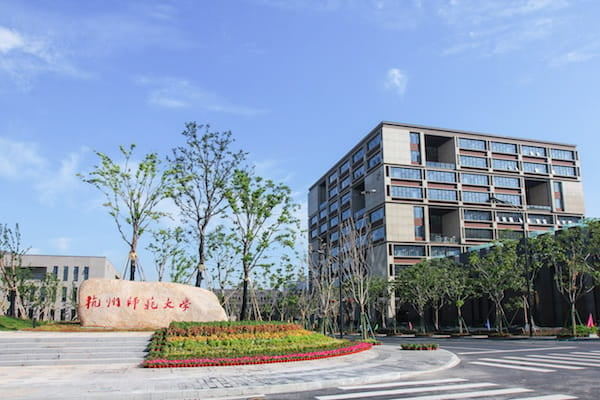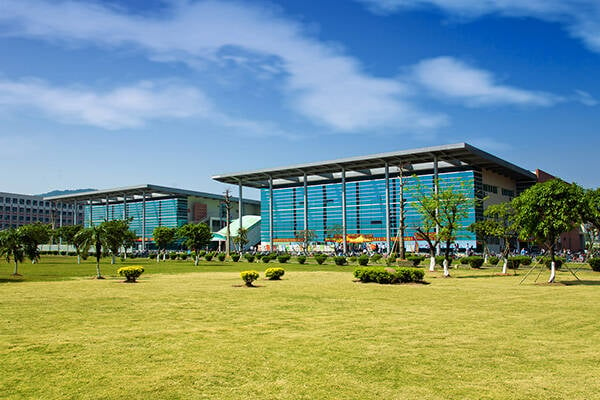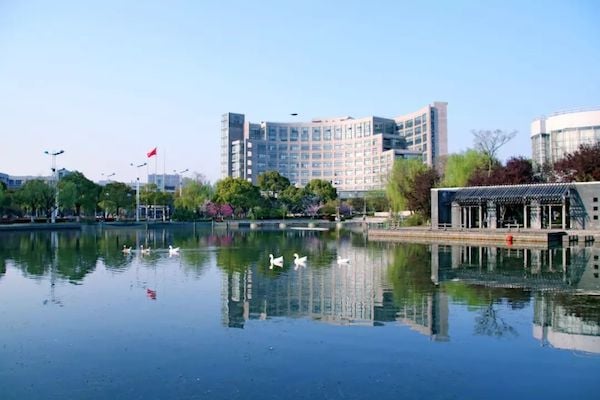 Harbin University of Science and Technology
Harbin University of Science and Technology
 |
 |
 |
 |
Introduction to Harbin University of Science and Technology
Harbin University of Science and Technology (哈尔滨理工大学, website) was formed by the merger of Harbin University of Science and Technology, Harbin Institute of Electrical Engineering, and Harbin Institute of Technology in 1995 under the former Ministry of Machinery Industry. It was transferred to Heilongjiang Province in 1998, and the central and local co-construction, The local-oriented management system was identified as one of the ten high-level universities for key construction in the Heilongjiang Province’s higher education construction plan in 2008. The former three schools were all founded in the 1950s. After nearly 70 years of development, the school has now become a work-oriented, science and technology combination, economics, management, philosophy, literature, law, education, art and other A teaching and research university with coordinated development of disciplines, strong school running ability and distinctive characteristics. In 2003, it was awarded “Excellent School for Evaluation of Undergraduate Teaching Work Level” by the Ministry of Education. In 2008, the Ministry of Education was approved to implement the “National College Students’ Innovative Experimental Plan” to implement universities. In 2011, it was selected as the first batch of “Middle and Western Basic Capacity Construction Projects” universities. In the same year, the Ministry of Education was awarded the honorary title of “National Colleges and Universities with Typical Employment Experiences” and was approved by the Ministry of Education as “Excellent Engineer Education and Training Plan University”. In 2015, it became a university jointly established by the People’s Government of Heilongjiang Province and the National Defense Technology Industry Bureau. In 2018, he was selected as a domestic “double first-class” university construction university in Heilongjiang Province, and the “Engineering” discipline entered the ESI global top 1% ranking for the first time.
Harbin University of Science and Technology has 4 school districts, of which there are 3 school districts in east, west and south in Harbin, and Rongcheng campus of Harbin University of Science and Technology in Rongcheng, Shandong Province. The school covers a total area of 2.0986 million square meters and the teaching infrastructure covers an area of 956,000 square meters. The library holds 2.56 million books, 1.122 million electronic books, 160,000 Chinese and foreign periodicals, and 26 types of literature databases. There are 2705 faculty members, including 1752 full-time teachers, 1344 people with deputy vocational or higher levels, 1 academician of the Chinese Academy of Engineering, 14 provincial teaching teachers; 33,496 full-time students, and nearly 200 foreign students.
The university has 18 colleges, 1 teaching department, and 1 teaching practice center; 63 undergraduate majors, 8 national first-class specialty majors, and 3 national-level pilot programs of the “Excellent Engineer Education and Training Plan”. Pilot programs for comprehensive reform of national undergraduate majors, 19 provincial key majors, 16 majors approved for the 2019 provincial first-class undergraduate professional construction sites, 6 provincial undergraduate professional comprehensive reform pilots, 2 provincial “outstanding engineers” “Educational training plan” pilot program; there are 8 doctoral degree authorized first-level disciplines, and 28 doctoral degree authorized second-level disciplines can be set up. 22 master’s degree authorized first-level disciplines can be set up with 98 master’s degree authorized second-level disciplines. There are 10 professional master’s degree authorization categories, 25 master’s degree professional authorization areas, and 5 national defense specialty disciplines. Post-doctoral research mobile stations are set up in 7 disciplines including electrical engineering, instrument science and technology, materials science and engineering, mechanical engineering, management science and engineering, business management, and computer science and technology. High voltage and insulation technology are national key disciplines, and there are 10 provincial key first-level disciplines. There are 11 provincial and ministerial-level key laboratories (engineering centers). Among them, “Heilongjiang Provincial Key Laboratory of Dielectric Engineering-Provincial-Ministry Joint Construction of National Key Laboratory Cultivation Base” has passed the acceptance of the Ministry of Science and Technology and was rated as “excellent”. The “Heilongjiang Province High-Efficiency Cutting and Tool Technology Engineering Laboratory” was approved by the National Development and Reform Commission as the “National and Local Joint Engineering Laboratory for High-Efficiency Cutting and Tools”, and the “Advanced Collaborative Innovation Center for Advanced Electrical Equipment Manufacturing and Intelligent Operation” was the first batch of “2011 Collaborations in Heilongjiang Province” Innovation Center. ” There are 6 key universities in Heilongjiang Province, “Heilongjiang Key Laboratory of Advanced Processing Technology and Intelligent Manufacturing” and “Heilongjiang Key Laboratory of Medical Biomechanics and Materials” approved by the first batch of key laboratory of Heilongjiang Province. There are 4 Heilongjiang universities and enterprises co-construction engineering research centers and a Grade A architectural design institute; there are 1 National University Science Park, 3 National Experimental Teaching Demonstration Centers, and 6 National Engineering Practice Education Centers. Two national-level college students’ out-of-school practical education bases. There are 1 national class resource sharing course and 2 national class video public courses.
Harbin University of Science and Technology undertook a total of 232 national plan projects including “973”, “863” projects and national funds, and 1577 projects commissioned by enterprises and institutions; 111 scientific and technological achievements were awarded provincial and ministerial awards; more than 7,000 academic papers were published Among them, more than 4,600 articles were included in the three major searches; 7,533 patents were filed and 3,971 patents were authorized. In terms of teaching research, following the second prize of national teaching achievements in 2009, it won 14 first prizes of provincial teaching achievements, 31 second prizes of provincial teaching achievements, and 5 first and second prizes of provincial scientific research achievements. 15 prizes and 12 third prizes. Undertook 440 provincial and ministerial education teaching research projects. Students participated in various provincial and provincial competitions and won 9,520 person-times, of which 195 were international, 2094 were national, and 7231 were provincial and regional; 166 national-level innovation and entrepreneurship training programs were approved in 2011-2017. 241 provincial projects
The university adheres to the school-running policy that combines connotation construction and extension development, and continuously expands channels for international exchanges and cooperation. It has now cooperated with nearly 60 high-level universities and research institutions in more than 20 countries in Europe, the Americas, and the Asia-Pacific region. Established a long-term and stable cooperative relationship, actively carried out substantive cooperation such as joint student training, teacher academic exchanges, and cooperative scientific research, and continuously improved the school’s school running level and comprehensive strength.
Teaching Program
![]() ISAC University Teaching Program
ISAC University Teaching Program
Related Universities




